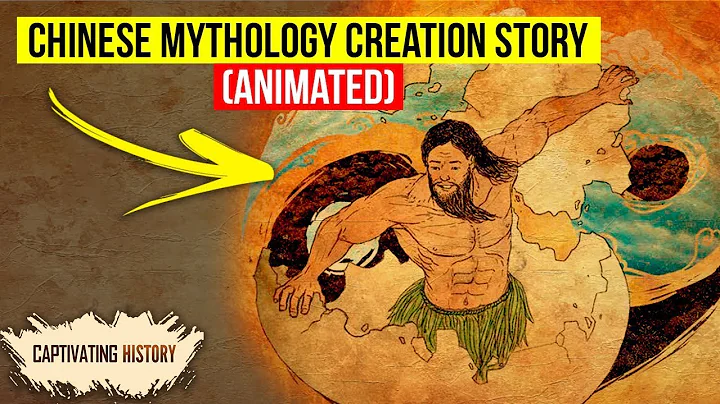In the "Three Emperors" character system, Fuxi and Nuwa are the most stable, and both of them have made many contributions. Fuxi has "creation of Tai Chi gossip", "creation of characters" and "net fishing" and so on. Nüwa also has achievements such as "Nuwa making people" and "Nuwa repairing the sky", both of which belong to the creation god. This is also the well-known label of the two. However, in many pre-Qin documents, there is no obvious relationship between the two. It was not until the Han Dynasty that the two had an intersection in the literature.
"Huainanzi: Lan Mingxun": "Fuxi and Nuwa did not try to save their virtues, but left their virtues in later generations. What? To the nihility and pure one, not to make harsh things." Gao, at the end of the Eastern Han Dynasty Annotated "Huainanzi": "Nuwa, the Yin Emperor, and the ruler of Fuxi."
In addition, the intersection of the two is not limited to the text, but the image of the stone relief of the Han Dynasty found so far There is also a type of "Fuxi and Nuwa Mating Picture", which is very common. What's interesting is that in such images, Fuxi and Nuwa sometimes hold the same object separately. Usually, it will be interpreted as: two people and one person obey the "rules" and the other person obey the "rules". Together they are "rules". In fact, this is only one of them, and most of this type of image appears in the tombs of Shandong officials. There is another category. In addition to holding the sun and the moon in her hand, Fuxi and Nuwa also hold the musical instruments "táo drum" and "panpipe". is mostly seen in the stone portraits of the Han Dynasty in Sichuan. This is also hidden The contribution of Fuxi and Nüwa is little known in ancient times.
The hand holds "rules", consistent with the background of the times and the identity of the tomb owner
- Unearthed from Beizhai Village, Yinan County, Linyi, Shandong, Eastern Han Dynasty


Fuxi Nuwa holding “rules” images of the Han Dynasty, which are mostly found in the tombs of Shandong officials or higher status. "Guide" is a compass, you can draw a circle. "Moment" is a square ruler. The moment is originally a straight moment, divided into nine degrees, five up and four down, and the repeated part in the middle is exactly a right angle. The working people in ancient times could use these two tools to make boats, carts and farm tools. The Han Dynasty happened to be a peak period for the development of ancient agricultural handicraft industry. So these two extremely important measuring instruments appear in the picture. But this is not the main reason. "Rules and rules" has another more important meaning, that is, it embodies the Confucianism of "If you don't follow rules, you can't make a square circle. (Mencius "Li Lou Zhang Ju")".
- Rubbings of Han portraits unearthed in Beizhai Village (right in the picture), among which Fuxi and Nuwa are holding "Guide" and "Rule" in their hands.

Han Dynasty Stone Tomb (Tomb No. 1) in Beizhai Village. Although the unearthed cultural relics do not directly prove the identity of the tomb owner, the tomb is large in scale and has a chamber The structure is complex, the portrait is exquisitely carved, and the content is extremely rich. There are carriages and horses, harvest banquets, music and dance, etc., so scholars speculate that the identity of the tomb owner is higher.
- Stone portrait of Fuxi and Nuwa in Wu's Ancestral Hall, Eastern Han Dynasty

A total of 11 tomb owners were found in Wu's Ancestral Hall, including four of them The owner of the tomb is a high-ranking official with prominent status, namely Wuliang, Wu Kaiming, Wu Ban, and Wu Rong.
Since Emperor Wu of the Han Dynasty, the rulers of the Han Dynasty have adopted a series of measures in order to strengthen the centralization of power. Among them are "removing a hundred schools of thought and respecting Confucianism." Officials are the most direct executors of Confucian policies. At the same time, this type of stone portrait with Fuxi and Nuwa is most concentrated in Nanyang County and its surrounding areas in the Han Dynasty. Nanyang County is the hometown of Liu Xiu, Emperor Guangwu, the founding emperor of the Eastern Han Dynasty. Liu Xiu believed in the theory of Zhenwei. Therefore, if a group of Liu Xiu’s followers and later generations were buried in this area, and in order to cater to the above wishes, the Fuxi and Nuwa stone carvings that held the "rules" were placed in the tomb to symbolize "the radius of the universe and the social order". It makes sense.
The hands hold the "sun and moon", "táo drum" and "panpipe", which are in line with the folk customs of Sichuan in the Han Dynasty
- "Fuxi Nuwa Picture" unearthed in Hejiang, Sichuan


This kind of "Fuxi Nuwa" unearthed in Sichuan The objects in the hands of Fuxi and Nuwa in the picture are clearly different from those in the above images. In addition to the sun and the moon, which are easy to distinguish, there are also musical instruments that many people mistakenly regard as "rules". This is actually the "drum" and "panpipe" in musical instruments.
Two people hold the sun and the moon in one hand. There are golden crows in the day-use circle, and toads and jade rabbits in the moon-use circle. This is also a common way for ancients to express the sun and the moon. Among them, Fuxi cares for the day and Nuwa celebrates the month. Fuxi represents yang-day-male-husband, and Nuwa represents yin-month-female-women. This actually implies "yin and yang harmony".
鼗gu, commonly known as "rattle drum". During the Xia Dynasty, Lu was also used in the admonishment procedure, and Yu stipulated that if there was an impeachment, he would attack Lu. In the Han Dynasty, Shi Na appeared in large numbers on stone reliefs. At the same time, in the Han Dynasty, 鼗 was a musical instrument in ceremonial ceremonies, and also a children's usual toy. The drum is very common on the stone relief.
- The yin drum in the Yinan stone relief "Yulongmanyan Opera"

There are 6 people in the picture, and 5 of them have yin drum
- Excavated stone panpipes

From the Spring and Autumn to the Qin and Han Dynasties, panpipes have been widely spread among the people. It occupies a place in the percussion instruments of the Han Dynasty.
Even so, why is there such a clear difference between the Fuxi and Nuwa statues unearthed in Sichuan and those unearthed in Shandong? It is widely known that Sichuan has unearthed a large number of stone portraits, portrait tiles, and pottery figurines about music and dance, such as the famous drumming and rap figurines, violin figurines, and flute figurines. Therefore, the musical instruments in the Nuwa Fuxi statue are in line with Sichuan. Local folk customs and customs are a manifestation of localization. There is also an extremely important point: this also hides the little-known contribution of Fuxi and Nuwa in ancient times, namely the creation of musical instruments.
Fuxi and Nuwa's little-known contribution
According to the records in the literature, creating musical instruments is also one of Fuxi and Nuwa's achievements.
Han Dynasty "Shuowen": "Se, Paxi (namely Fuxi) made string music." "Tongli Yizhuang" also has: "Fuxi made a flute with bamboo as a total of sixteen pipes." And in the Eastern Han Dynasty Huangfu Mi’s "Emperor Century": "Di Nuwa, whose surname is Yifeng, is composed of Shenghuang, and also the head of a snake body." Although the musical instruments in the literature are slightly different from those in the stone relief, they belong to Nanyang in the Han Dynasty. It can be noticed in the rock carvings of the portraits of music and dance and Baixi unearthed in the county generation that most of the flute players also play the drums, and the two should be a common combination. Therefore, in this kind of Fuxi and Nuwa statues in Sichuan, there is no doubt that the two people are holding drums and panpipes. This is the use of musical instruments as a sign of their identity.
In addition to Sichuan, similar portraits were also unearthed in Chongqing. The picture shows the portrait unearthed from Shapingba, Chongqing.

Another example is the colorful silk statue of Fuxi and Nuwa from the Sui and Tang Dynasties unearthed in Xinjiang. At this time, Fuxi and Nuwa have deep eyebrows and high noses, wearing a Hu suit, and Fuxi still has a cheek. Hu has obvious ethnic characteristics. This is also a manifestation of the localization of Fuxi and Nuwa.
- Fuxi and Nuwa statues unearthed in Xinjiang

Therefore, when discussing some details of such Fuxi and Nuwa mating portraits in the Han Dynasty, we should also Combined with the background of the Han Dynasty. At the same time, it is impossible to generalize the items held by two persons in such images as "rules". Also note the slight differences and regionality. It is a pity that after the Sui and Tang Dynasties, such images of Fuxi and Nuwa created by the Han Dynasty completely disappeared from the tombs.





















